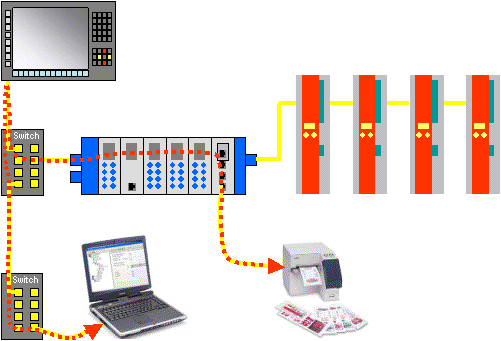Openness
EtherCAT is open
The EtherCAT technology is not only fully Ethernet-compatible, but also characterized by a particular open design: the protocol tolerates other Ethernet-based services and protocols on the same physical network - usually only with minimum loss of performance. There is no restriction on the type of Ethernet device that can be connected within the EtherCAT strand via a switch port. Devices with fieldbus interface are integrated via EtherCAT fieldbus master terminals. The UDP protocol variant can be implemented on each socket interface.
EtherCAT devices can additionally have a TCP/IP stack and therefore externally behave like a normal Ethernet device. The master serves as a switch that transfers the frames to the respective devices according to the address information. Instead of switch ports, only the EtherCAT addresses automatically assigned during startup are used.

The switch port terminals work accordingly: Any Ethernet devices can be connected. The Ethernet frames are tunneled through the EtherCAT protocol, as usual in the Internet (e.g. VPN, PPPoE (DSL) etc.). The EtherCAT network is fully transparent for the Ethernet device, and the real-time characteristics of the EtherCAT are not impaired.
EtherCAT Technology Group
The EtherCAT Technology Group (ETG, http://www.ethercat.org) is the international manufacturer and user association with a mission to disseminate, further develop and support EtherCAT. All companies are invited to become members.
Internationally standardised
The EtherCAT Technology Group is an official standardization partner of IEC (International Electrotechnical Commission). The EtherCAT specification was published by the IEC as IEC/PAS 62407 and is available from the IEC (http://www.iec.ch). It is currently integrated in the following fieldbus standards: IEC 61158, IEC 61800-7 and ISO 15745.